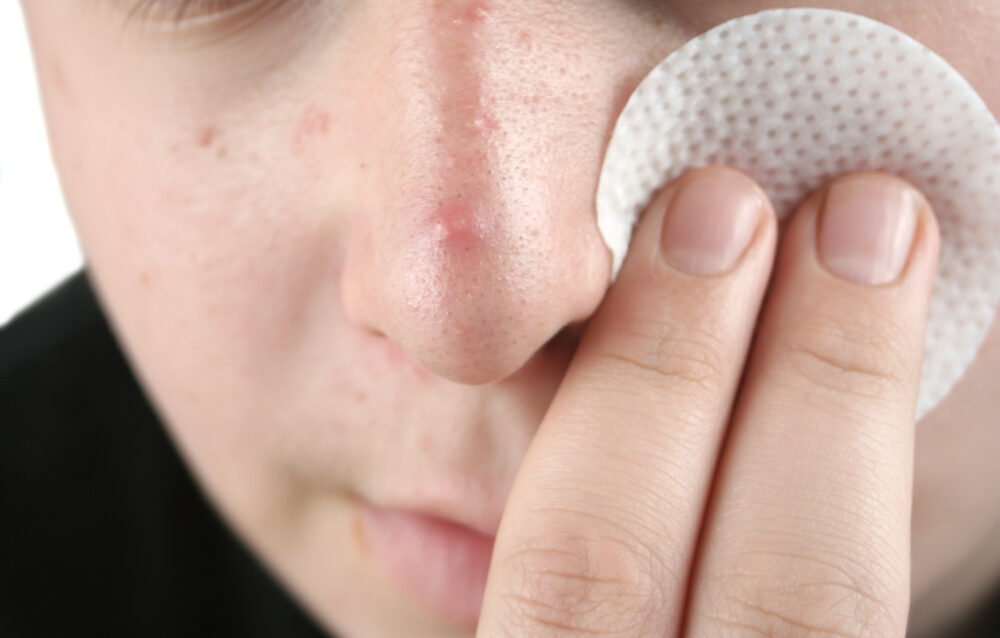Side Effects of Xeljanz, Rinvoq and Similar Drugs May Increase Risk of Acne: Study
Researchers found that when the drugs were used to treat dermatological conditions, the risk of acne was significantly higher than when they were used to treat other ailments.

A new study suggests Xeljanz and similar drugs used to treat inflammation and autoimmune conditions, like ulcerative colitis and rheumatoid arthritis, may increase the risk of developing acne.
Harvard researchers report that patients taking a class of drugs known as Janus Kinase (JAK) inhibitors, which includes blockbuster treatments like Xeljanz, Rinvoq and others, were four times more likely to experience acne than patients not taking the medications. Their findings were published on October 18 in the journal JAMA Dermatology.
JAK inhibitors, which block the JAK enzymes in the body, are used to treat a wide variety of conditions ranging from autoimmune diseases like Crohn’s disease, rheumatoid arthritis, and alopecia, as well as COVID-19 and other inflammatory ailments. They are also commonly used to treat dermatological conditions, such as eczema and atopic dermatitis.
Xeljanz, Rinvoq Acne Risks
In this latest study, researchers from Harvard Medical School, Vanderbilt University, and other universities conducted a systematic review and meta-analysis of 25 unique studies, including phase 2 and 3 randomized clinical trials involving nearly 11,000 participants. They focused on the use of JAK inhibitors, including JAK1, combination JAK1 and JAK2, and tyrosine kinase 2-specific inhibitor drugs, and the possible side effects of acne.
According to the findings, patients taking JAK inhibitors were 3.83 times more likely to have acne than patients on a placebo. However, the rates varied between the types of JAK inhibitors used. The findings indicate patients taking JAK1 and combo JAK1 and JAK2 inhibitors are more likely to have acne side effects.
The researchers found that patients taking JAK1 inhibitors, like Imbruvica and Zydelig, faced nearly five times the risk of having acne. While those taking a combination of JAK1 and JAK2 inhibitors, like Rinvoq and Xeljanz, faced a nearly four-fold increase in acne.
Participants taking tyrosine kinase 2-specific inhibitor treatments, like Gleevec and Sprycel, were only 2.5 times more likely to have acne. Patients taking Cibinqo faced more than a 13-fold risk of getting acne, those taking Olumiant and Rinvoq, nearly five times the risk, the data indicates.
The risk of having acne as a side effect was more common among patients in drug trials where the drug was used for dermatologic conditions, compared to other types of conditions, like arthritis, ulcerative colitis, or alopecia, the researchers noted.
However, the study’s authors warned that more research is needed to determine the full acne risks associated with these drugs, as well as the mechanism of action that causes the skin reactions.
“These findings suggest that patients should be properly counseled on the potential adverse effects of acne before beginning treatment with JAK inhibitors,” the researchers advised.
Xeljanz Cancer Concerns and Lawsuits
The findings may add to concerns that have emerged over other side effects of Xeljanz, Rinvoq and other similar JAK inhibtors, which have been linked to blood clots and cancer risks in recent years.
Xeljanz (tofacitinib) was introduced by Pfizer as the first JAK inhibitor in 2012, joining the lucrative market for treatments of individuals with rheumatoid arthritis, psoriatic arthritis and ulcerative colitis. The drug was considered revolutionary, and quickly gained the upper-hand on alternative TNF inhibitors, which are administered by shot or infusion.
As more data has become available, concerns about potential Xeljanz cancer risks and other side effects began to emerge in early 2021, after preliminary data from a post-marketing study linked Xeljanz to an increased risk of cancer, heart attacks, strokes and deadly blood clots.
These findings have resulted in a number of Xeljanz lawsuits being filed by former users diagnosed with cancer, pulmonary embolism and other injuries, alleging that drug makers failed to adequately research the side effects of JAK inhibitors and warn about potential risks compared to older TNF inhibitors.
Although each of the complaints raise similar questions of fact and law, there are not currently any consolidated pretrial proceedings in the federal court system, and each of the lawsuits is moving forward on an individual tract.
The number of lawsuits are projected to grow throughout the rest of 2023 as Xeljanz lawyers continue to investigate and file new claims for individuals who took Xeljanz and Xeljanz XR, or any of the JAK inhibitor drugs and suffered;
- Pulmonary Embolism (PE)
- Deep Vein Thrombosis (DVT)
- Ischemic or Embolic Stroke (do not accept mini-strokes)
- Heart Attack
- Cancer or Lymphoma Diagnosis
- Hospitalization due to another blood clot injury
Get more articles like this sent directly to your inbox.
"*" indicates required fields






0 Comments